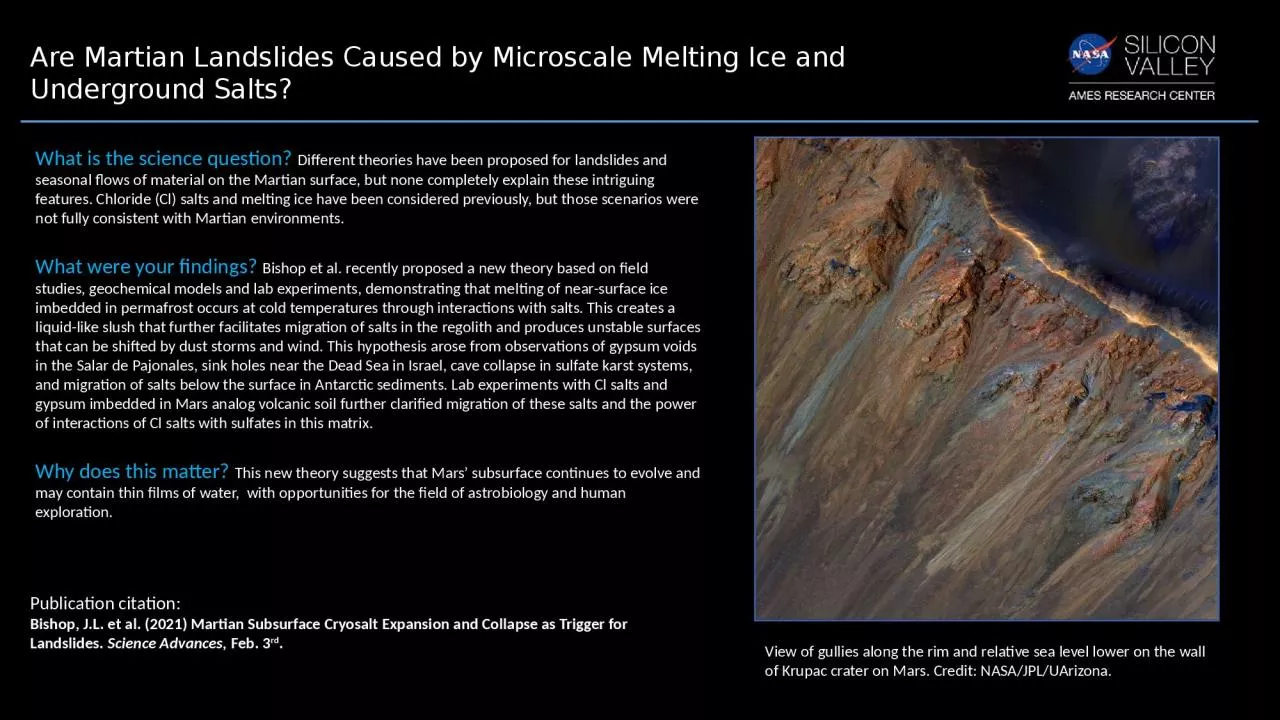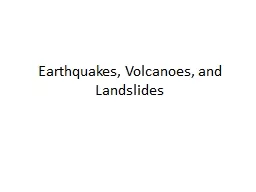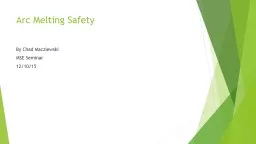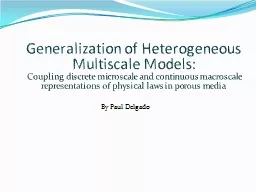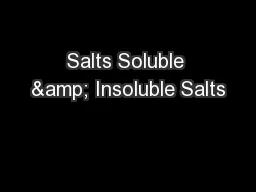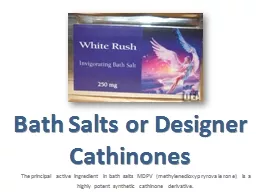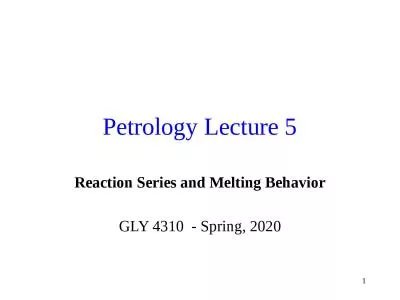PPT-Are Martian Landslides Caused by Microscale Melting Ice and Underground Salts?
Author : valerie | Published Date : 2024-02-02
View of gullies along the rim and relative sea level lower on the wall of Krupac crater on Mars Credit NASAJPL UArizona What is the science question Different
Presentation Embed Code
Download Presentation
Download Presentation The PPT/PDF document "Are Martian Landslides Caused by Microsc..." is the property of its rightful owner. Permission is granted to download and print the materials on this website for personal, non-commercial use only, and to display it on your personal computer provided you do not modify the materials and that you retain all copyright notices contained in the materials. By downloading content from our website, you accept the terms of this agreement.
Are Martian Landslides Caused by Microscale Melting Ice and Underground Salts?: Transcript
Download Rules Of Document
"Are Martian Landslides Caused by Microscale Melting Ice and Underground Salts?"The content belongs to its owner. You may download and print it for personal use, without modification, and keep all copyright notices. By downloading, you agree to these terms.
Related Documents

